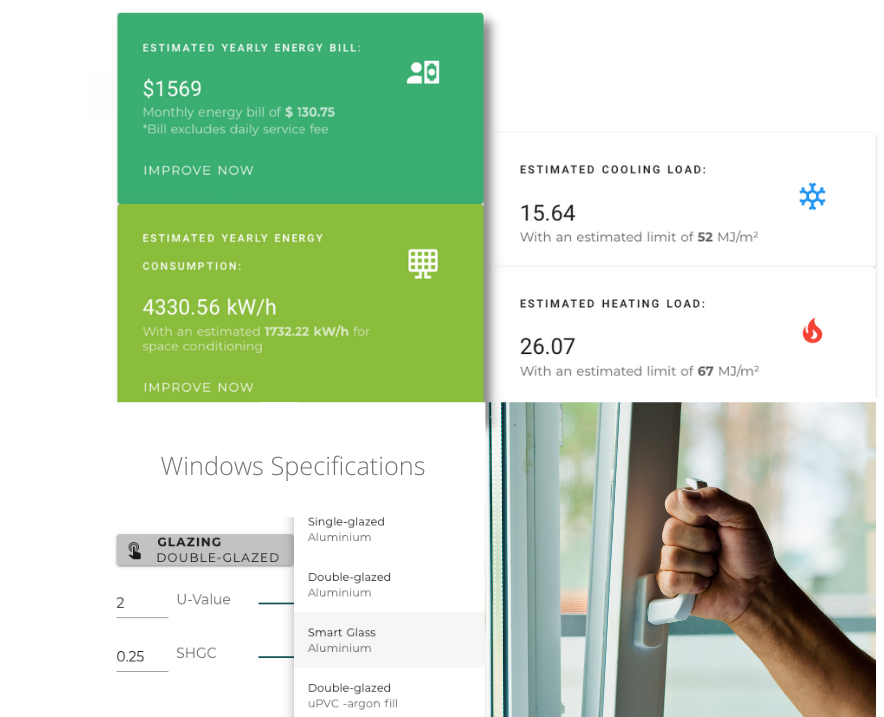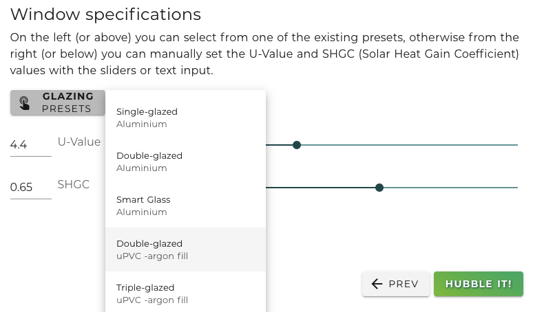Windows are one of the most complex elements in the fabric of a home. They connect the interior spaces to the outdoor environment and provide views, natural light, and ventilation. However, they can also negatively impact a home's thermal performance by allowing heat loss in colder months and unwanted heat gains in hotter months. Thankfully, there are ways in which you can design to reduce the unwanted impacts of windows and increase the energy efficiency and thermal performance of your home. This article covers some important aspects to consider.

Climate & Location
Australia has a varied range of climates, ranging from tropical weather in Darwin to frosty conditions in Tasmania. Each unique climate requires windows with different characteristics, such as ventilation and heat transfer capabilities, to ensure a comfortable and energy-efficient home. It is important to understand these characteristics or thermal properties of windows and to select windows that benefit your home's climate.
Thermal Properties of Windows
The number of glass and frame type combinations available on the market is immense. Selecting the right ones for your home is a critical step to improve energy efficiency and the window's thermal performance.
Frame material: The most energy-efficient window frames are made from materials that have higher insulative properties, such as timber and uPVC. Such materials restrict the conduction of unwanted heat and cold from outside to inside. Although aluminium is a popular choice, it is a good conductor material, causing a great deal of heat to be lost in winter and heat to be gained in summer. Overcome this issue by selecting aluminium frames with a thermal break - an insulating material minimising heat transfer.
Glass type: The type of glazing you choose can dramatically affect the energy efficiency of your home. Glass products can be divided into several categories, including clear or toned glass, low emissivity glass, and laminated glass. Additionally, you can choose to have single, double, or even triple-glazed windows. In terms of energy efficiency, single clear glazing is the least efficient and provides little protection from heat transfer. Double glazing provides more insulative benefits due to the air gaps. Additionally, these air gaps can be filled with argon gas to further benefit the insulation.
Thermal performance of windows
U-value: A window’s U-value is a measure of how readily a window system conducts heat. The lower the U-value, the greater the window’s resistance to heat flow and the better its insulating value.
SHGC: The Solar Heat Gain Coefficient is a measure of how readily heat from direct sunlight flows through a window system. It is the fraction of incident solar radiation admitted through a window, directly transmitted as well as absorbed and subsequently released as heat inside a home. SHGC is expressed as a number between 0 and 1. The lower a window's SHGC, the less solar heat it transmits.
Passive solar design
Windows can act as weak spots in the insulation of your home's fabric, allowing unwanted heat gains and losses. Therefore, trying to achieve a level of passive solar design is critical for achieving good energy efficiency.

Key things to consider include;
- Design the shading of windows and their position and size to allow sunshine in during winter months and keep it out during summer months.
- Situate window and doors to allow cross-ventilation and natural cooling
- Use internal thermal mass to store the sun's heat and release this warmth in cold conditions
- Seal openings well to minimise unwanted draughts
Use Hubble to choose your windows

Hubble is proud to be piloting innovative solutions in partnership with a handful of Australian window suppliers. Join our Hubble waitlist to be kept in the loop!
Sources:
https://www.yourhome.gov.au/passive-design/glazing
https://www.redenergy.com.au/living-energy/smart-homes/a-guide-to-energy-efficient-windows
https://build.com.au/climate-considerations-windows